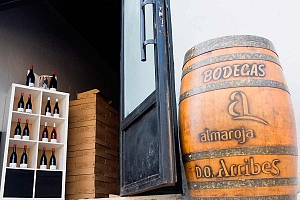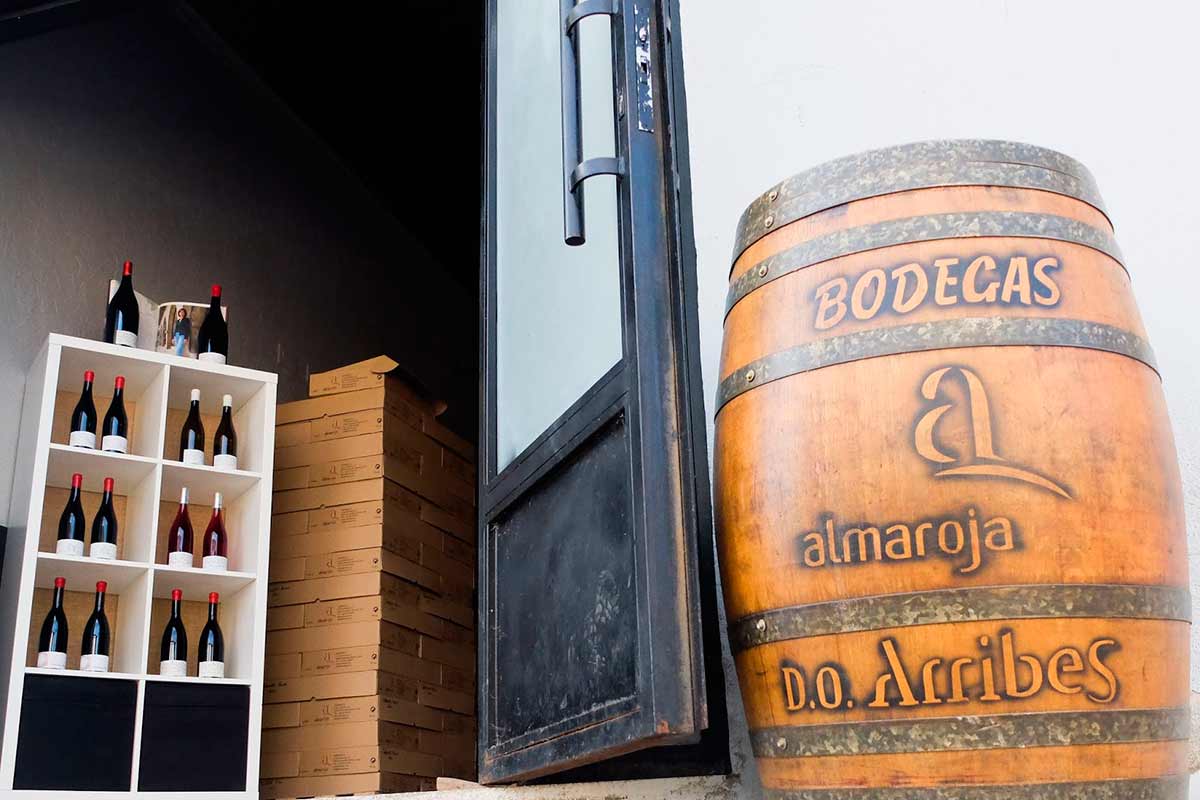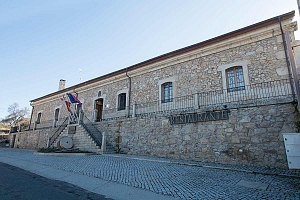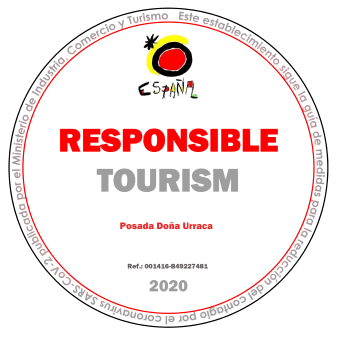Aviso Legal y Política de Privacidad
¿Quién es el Responsable del tratamiento de tus datos?
Identidad: POSADA DOÑA URRACA SL
CIF: B49227481
Dirección postal: CALLE REQUEJO Nº 272 (49220 – FERMOSELLE – ZAMORA)
Teléfono: 980613473
Móvil: 679995602
Página Web: www.posadadedonaurraca.com
Email: reservas@posadadedonaurraca.com
¿Con qué finalidad tratamos tus datos personales?
- Gestionar el servicio solicitado.
- Enviarte mensajes de POSADA DOÑA URRACA SL para informarte de mejoras o novedades en nuestros productos y servicios. Recuerda que siempre podrás personalizar estos envíos a través de los ajustes de tu menú privado de candidato y en el apartado 6 (Derechos) te explicamos cómo puedes solicitar no recibir este tipo de comunicaciones.
- Prevenir abusos y fraudes en el uso de nuestros servicios (por ejemplo, actividades fraudulentas, ataques de denegación de servicios, envío de spam, entre otros).
- Cesión de datos a organismos y autoridades públicas, siempre y cuando sean requeridos de conformidad con las disposiciones legales y reglamentarias.
¿Por cuánto tiempo conservaremos tus datos?
Tus datos serán conservados mientras dure la relación comercial con nosotros, solicites su supresión, así como el tiempo necesario para cumplir las obligaciones legales.
¿Cuál es la legitimación para el tratamiento de tus datos?
La base legal para el tratamiento de tus datos radica en:
La ejecución de un contrato en relación con la finalidad indicada en el apartado 1 anterior.
El consentimiento del usuario en relación con la finalidad indicada en los apartado 2.
El interés legítimo de POSADA DOÑA URRACA SL en relación con la finalidad indicada en el apartado 3 anterior.
El cumplimiento de obligaciones legales aplicables a POSADA DOÑA URRACA SL para la finalidad indicada en el apartado 4 anterior.
¿A qué destinatarios se comunicarán tus datos?
Tus datos personales serán comunicados a terceros en los siguientes supuestos:
Tus datos podrán ser accedidos por aquellos proveedores que prestan servicios a POSADA DOÑA URRACA SL , tales como servicios de alojamiento de contenido, de mensajería instantánea, de envío de notificaciones, servicios publicitarios, etc. POSADA DOÑA URRACA SL ha suscrito los correspondientes contratos de encargo de tratamiento con cada uno de los proveedores que prestan servicios a POSADA DOÑA URRACA SL con el objetivo de garantizar que dichos proveedores tratarán tus datos de conformidad con lo establecido en la legislación vigente.
Tus datos personales también podrán ser cedidos a las autoridades competentes en los casos que exista una obligación legal.
¿Cuáles son tus derechos cuando nos facilitas tus datos y cómo puedes ejercerlos?
Tienes derecho a obtener confirmación sobre si en POSADA DOÑA URRACA SL estamos tratando datos personales que te conciernan, o no.
Asimismo, tienes derecho a acceder a tus datos personales, así como a solicitar la rectificación de los datos inexactos o, en su caso, solicitar su supresión cuando, entre otros motivos, los datos ya no sean necesarios para los fines que fueron recogidos.
En determinadas circunstancias, podrás solicitar la limitación del tratamiento de tus datos, en cuyo caso únicamente los conservaremos para el ejercicio o la defensa de reclamaciones.
En determinadas circunstancias y por motivos relacionados con tu situación particular, podrás oponerte al tratamiento de tus datos. POSADA DOÑA URRACA SL dejará de tratar los datos, salvo por motivos legítimos imperiosos, o el ejercicio o la defensa de posibles reclamaciones.
Asimismo, puedes ejercer el derecho a la portabilidad de los datos, así como retirar los consentimientos facilitados en cualquier momento, sin que ello afecte a la licitud del tratamiento basado en el consentimiento previo a su retirada.
Si deseas hacer uso de cualquiera de tus derechos puedes dirigirte a nosotros a través de la dirección de correo electrónico o mediante escrito a la dirección postal indicada anteriormente. Recuerda facilitar la mayor información posible sobre tu solicitud: Nombre y apellidos, dirección de correo electrónico que utilizas para la cuenta o portal objeto de tu solicitud.
Por último, te informamos que puedes dirigirte ante la Agencia Española de Protección de Datos y demás organismos públicos competentes para cualquier reclamación derivada del tratamiento de tus datos personales.
¿Qué cookies utilizamos?
Para conocer las cookies que utilizamos en esta página web/aplicación móvil, recuerda que puedes acceder a nuestra política de cookies y relación y descripción de cookies.
CONDICIONES DE USO
Las condiciones generales contenidas en el presente aviso legal regulan el acceso y utilización de la página Web que POSADA DOÑA URRACA SL en principio, pone gratuitamente a disposición de los usuarios de Internet, sin perjuicio de que esta circunstancia pueda variar en el futuro.
El acceso a la misma implica la aceptación sin reservas de las presentes condiciones.
La utilización de determinados servicios ofrecidos en este sitio se regirá, además, por las condiciones particulares previstas en cada caso, que se entenderán aceptadas por el mero uso de tales servicios.
AUTORIZACIÓN
Se autoriza la visualización, impresión y descarga parcial del contenido de la página Web sólo y exclusivamente si concurren las siguientes condiciones:
- Que sea compatible con los fines de la página Web.
- Que se realice con el exclusivo ánimo de obtener la información contenida para uso personal y privado. Se prohíbe expresamente su utilización con fines comerciales o para su distribución, comunicación pública, transformación o descompilación.
- Que ninguno de los contenidos relacionados en la página Web sea modificado de manera alguna.
- Que ningún gráfico, icono o imagen disponible en la página Web sea utilizado, copiado o distribuido separadamente del resto de imágenes que lo acompañan.
La utilización no autorizada de la información contenida en la página Web, su reventa, así como la lesión de los derechos de propiedad intelectual o industrial de POSADA DOÑA URRACA SL dará lugar a las responsabilidades legalmente establecidas.
FUNCIONAMIENTO Y DISPONIBILIDAD DEL SITIO WEB:
POSADA DOÑA URRACA SL se reserva la facultad de efectuar en cualquier momento y sin necesidad de previo aviso modificaciones y actualizaciones de la información contenida en la página Web, de la configuración y presentación de ésta y de las condiciones de acceso.
POSADA DOÑA URRACA SL no se hace responsable de los errores de seguridad que se puedan producir ni de los daños que puedan causarse al sistema informático del usuario (hardware y software), o a los ficheros o documentos almacenados en el mismo, como consecuencia de:
- La presencia de un virus en el ordenador del usuario que sea utilizado para la conexión a los servicios y contenidos de la página Web
- Un mal funcionamiento del navegador
- Uso de versiones no actualizadas del mismo
POSADA DOÑA URRACA SL no garantiza la ausencia de virus ni de otros elementos en el Sitio Web introducidos por terceros ajenos a POSADA DOÑA URRACA SL que puedan producir alteraciones en los sistemas físicos o lógicos de los Usuarios o en los documentos electrónicos y ficheros almacenados en sus sistemas. En consecuencia, POSADA DOÑA URRACA SL no será en ningún caso responsable de cualesquiera daños y perjuicios de toda índole que pudieran derivarse de la presencia de virus u otros elementos que puedan producir alteraciones en los sistemas físicos o lógicos, documentos electrónicos o ficheros de los Usuarios.
Asimismo, POSADA DOÑA URRACA SL utiliza diversas medidas de protección de su Sitio Web contra ataques informáticos de terceros. No obstante, POSADA DOÑA URRACA SL no garantiza que terceros no autorizados puedan tener acceso al tipo de uso del Sitio Web que hace el Usuario o las condiciones, características y circunstancias en las cuales se realiza dicho uso. En consecuencia, POSADA DOÑA URRACA SL no será en ningún caso responsable de los daños y perjuicios que pudieran derivarse de dicho acceso no autorizado.
POSADA DOÑA URRACA SL no garantiza la inexistencia de interrupciones o errores en el acceso a la página Web o a su contenido, ni que ésta se encuentre actualizada. POSADA DOÑA URRACA SL llevará a cabo, siempre que no concurran causas que lo hagan imposible o de difícil ejecución y tan pronto tenga noticia de los errores, desconexiones o falta de actualización en los contenidos, todas a aquellas labores tendentes a subsanar los errores, restablecer la comunicación y actualizar los contenidos.
POSADA DOÑA URRACA SL se reserva el derecho de interrumpir el acceso a su Sitio Web o de cualquiera de sus contenidos en cualquier momento y sin previo aviso.
CONTENIDOS Y LA CALIDAD DEL SERVICIO
POSADA DOÑA URRACA SL no asume la responsabilidad alguna derivada de los contenidos enlazados en la página Web, siempre que sean ajenos a la misma, ni garantiza la ausencia de virus u otros elementos en los mismos que puedan producir alteraciones en el sistema informático (hardware y software), en los documentos o los ficheros del usuario, excluyendo cualquier responsabilidad por los daños de cualquier clase causados al usuario por este motivo.
En el caso de que cualquier usuario, cliente o un tercero, considerara que el contenido o los servicios prestados por las páginas enlazadas son ilícitos o lesionan bienes o derechos del propio usuario, de un cliente o de un tercero susceptibles de indemnización, y, en particular, consistan en:
- Actividades o contenidos susceptibles de ser considerados delictivos conforme a la normativa penal española.
- Actividades o contenidos que violen derechos de propiedad intelectual o industrial.
- Actividades o contenidos que pongan en peligro el orden público, la investigación penal, la seguridad pública y la defensa nacional.
- Actividades o contenidos que pongan en peligro la protección de la salud pública, el respeto a la dignidad de la persona y al principio de no discriminación, y la protección de la salud y la infancia.
Podrá ponerlo en conocimiento de POSADA DOÑA URRACA SL no obstante, la recepción por esa de dicha comunicación no supondrá conocimiento a los efectos de la responsabilidad prevista en el artículo 17 de la LSSICE
POSADA DOÑA URRACA SL no se hace responsable de la falta de utilidad o adecuación para un uso específico del presente Sitio Web. Tampoco se responsabiliza de los perjuicios que pueda sufrir el Usuario por los errores u omisiones de los que pudieran adolecer los contenidos de este Sitio Web, si bien se compromete a verificar y vigilar periódicamente sus contenidos e informaciones.
UTILIZACIÓN DEL PORTAL WEB
POSADA DOÑA URRACA SL no se hará responsable en ningún caso del uso que los Usuarios pudieran hacer del Sitio Web o los Contenidos, ni de los daños y perjuicios que pudieran derivarse del mismo.
ENLACES A OTROS SITIOS WEB
Todo enlace de terceros a la página Web debe serlo a su página principal, quedando expresamente prohibido los “links profundos”, el “framing” y cualquier otro aprovechamiento de los contenidos de la página Web, a favor de terceros no autorizados.
A través del presente Sitio Web el Usuario podrá acceder a sitios Web pertenecientes a y/o gestionados por terceros.
La presencia de tales enlaces es meramente informativa, no constituyendo en ningún caso una invitación a la contratación de productos o servicios que se ofrezcan en el Sitio Web de destino. El Usuario accederá bajo su exclusiva responsabilidad al contenido, y en las condiciones de uso que rijan en los mismos. El Usuario reconoce y acepta que POSADA DOÑA URRACA SL no se hace responsable, directa o indirectamente, de cualesquiera daños y perjuicios causados por el acceso a tales links.
En caso de que POSADA DOÑA URRACA SL tenga conocimiento efectivo de que la información o la actividad a la que se remite desde dichos enlaces es ilícita, constitutiva de delito o puede lesionar bienes o derechos de un tercero susceptibles de indemnización, actuará con la diligencia necesaria para suprimir o inutilizar el enlace correspondiente con la mayor brevedad posible.
PROPIEDAD INDUSTRIAL
El uso de la página Web no atribuye al usuario derecho alguno sobre marcas, nombres comerciales, signos distintivos o diseños de cualquier tipo que aparecen en la página Web
Los artículos, noticias, legislación y demás contenidos públicos cuyos derechos de propiedad intelectual no pertenezcan a POSADA DOÑA URRACA SL están publicados con la única finalidad de informar a los usuarios de esta página.
POSADA DOÑA URRACA SL es titular del código fuente, diseño, estructura de navegación, bases de datos y los distintos elementos de software de la página Web, así como de los derechos de propiedad industrial e intelectual referidos a los contenidos que en ella se incluyan.
LEGISLACIÓN APLICABLE Y JURISDICCIÓN:
POSADA DOÑA URRACA SL se reserva la facultad de presentar las acciones civiles o penales que considere oportunas por la utilización indebida de su sitio web o por el incumplimiento de las presentes condiciones.
La relación entre el usuario y el prestador se regirá por la normativa vigente y de aplicación en el territorio español. De surgir cualquier controversia las partes podrán someter sus conflictos cumpliendo con las normas sobre jurisdicción y competencia al respecto. POSADA DOÑA URRACA SL tiene su domicilio en ZAMORA, España.




